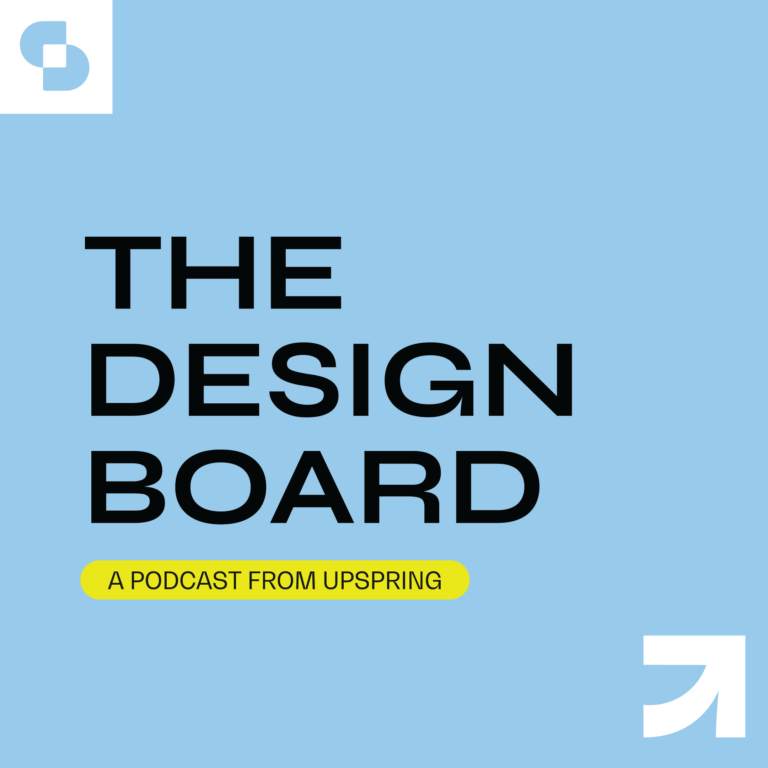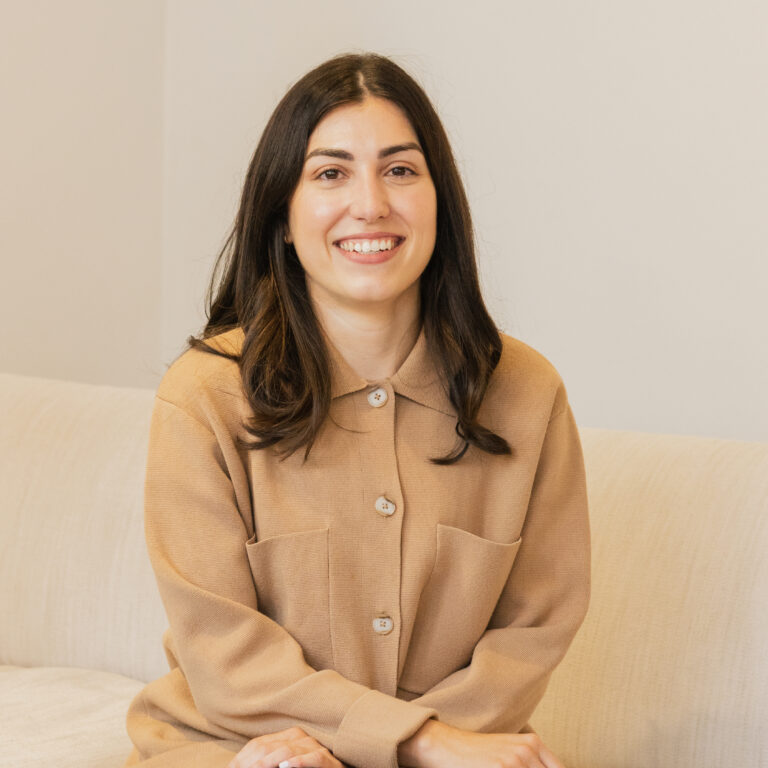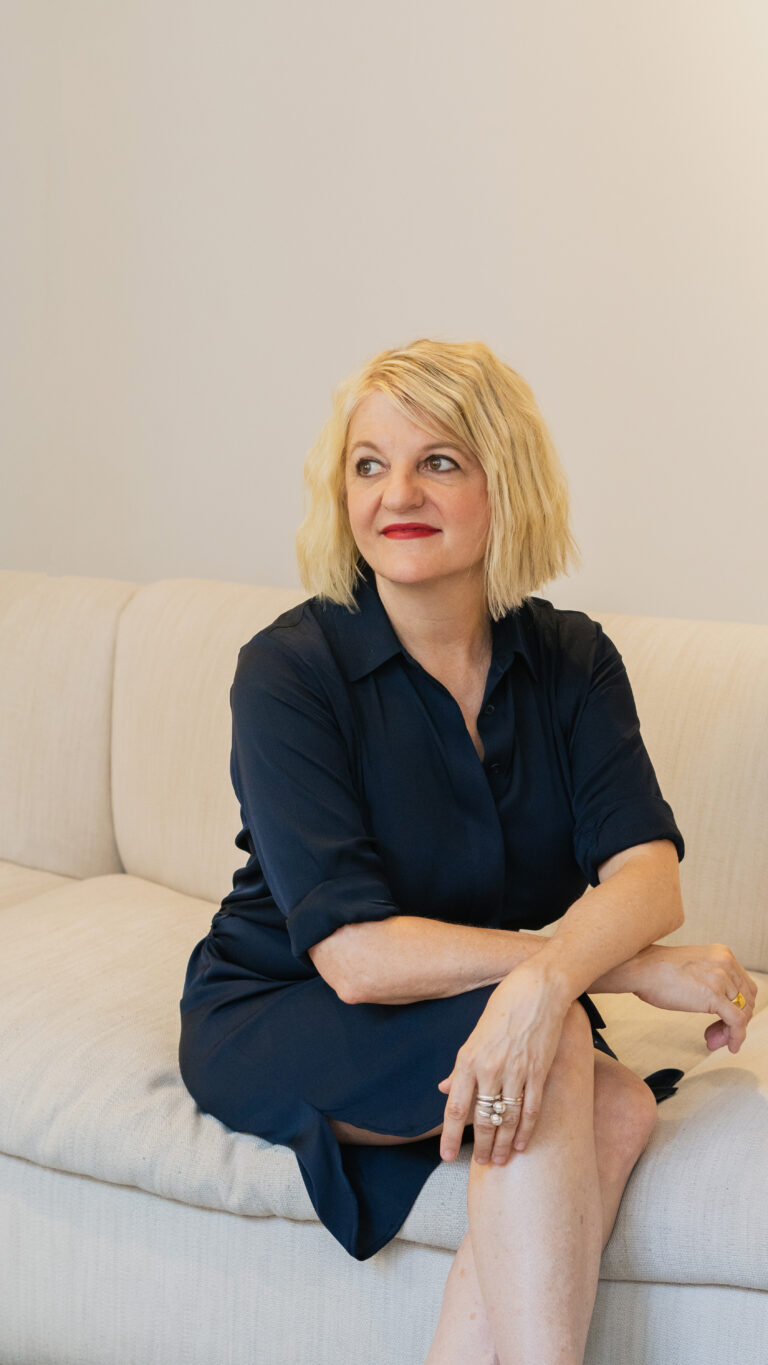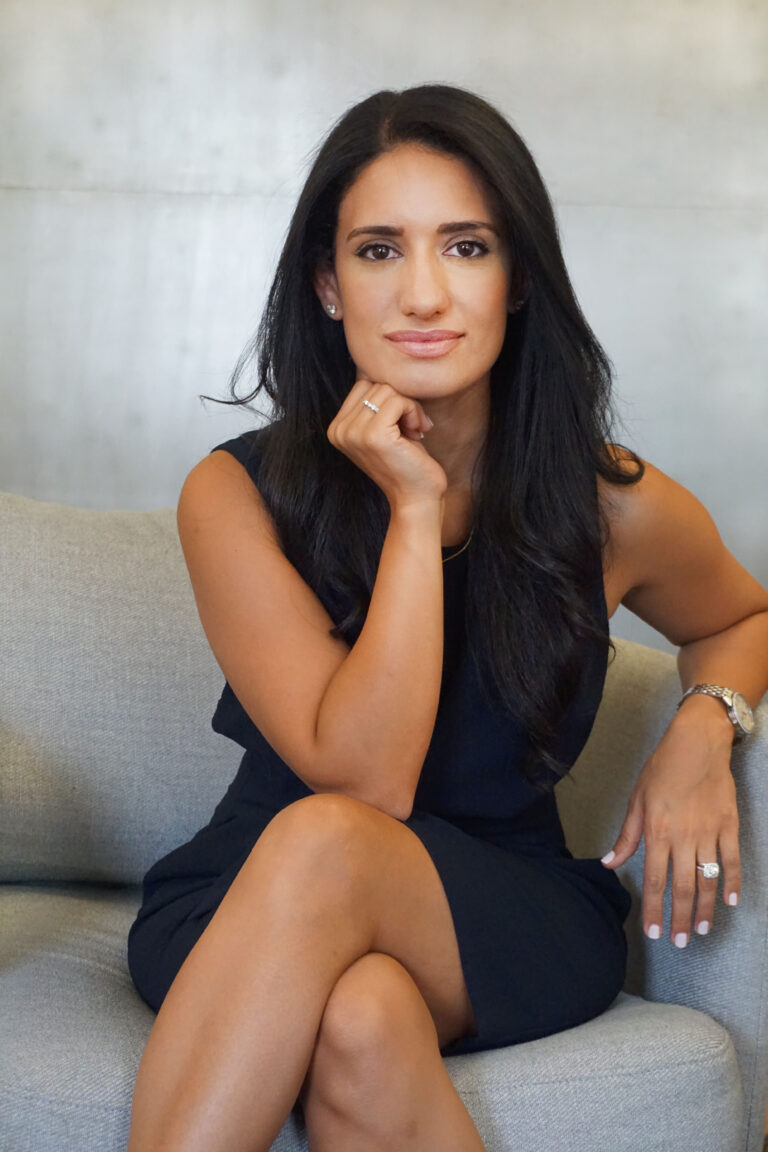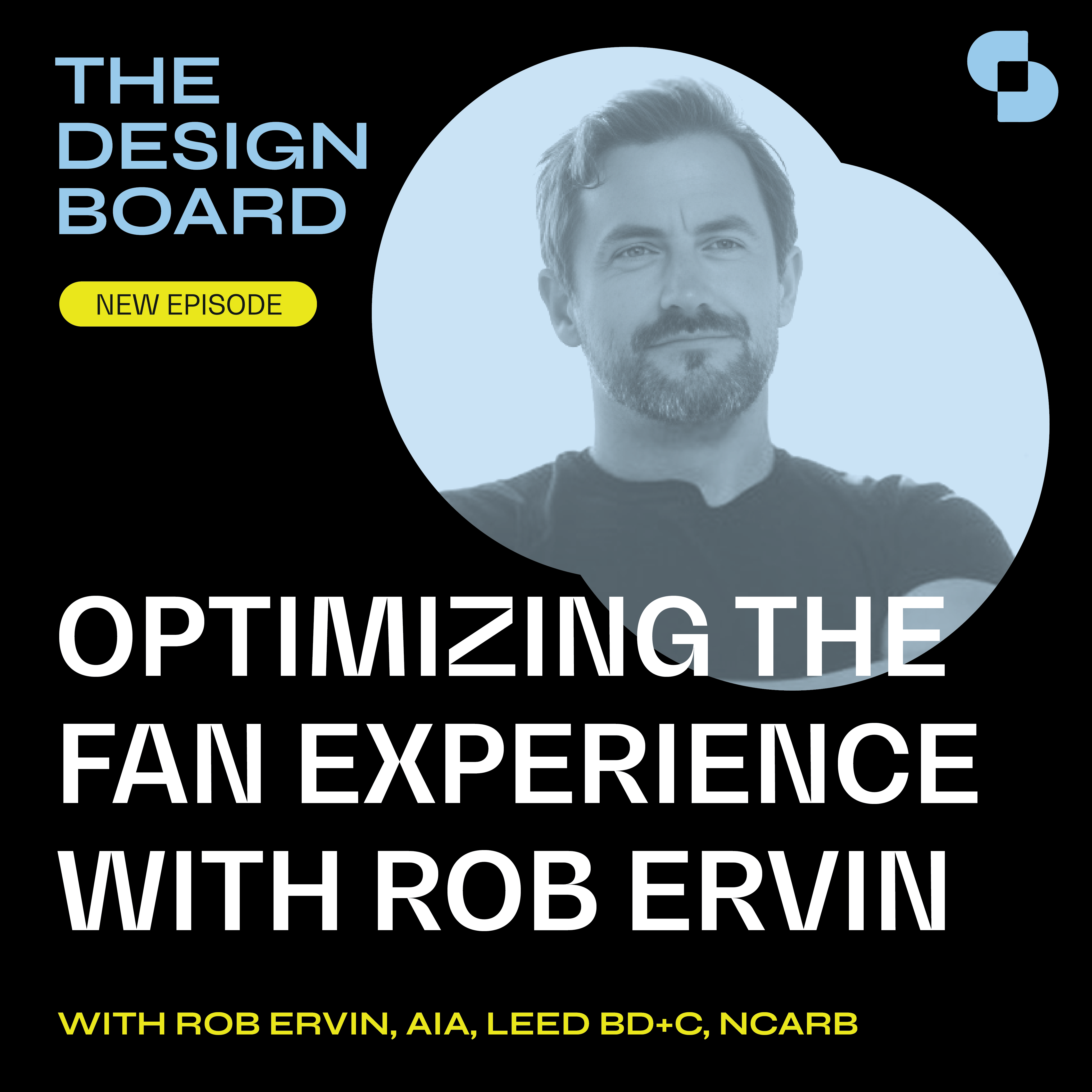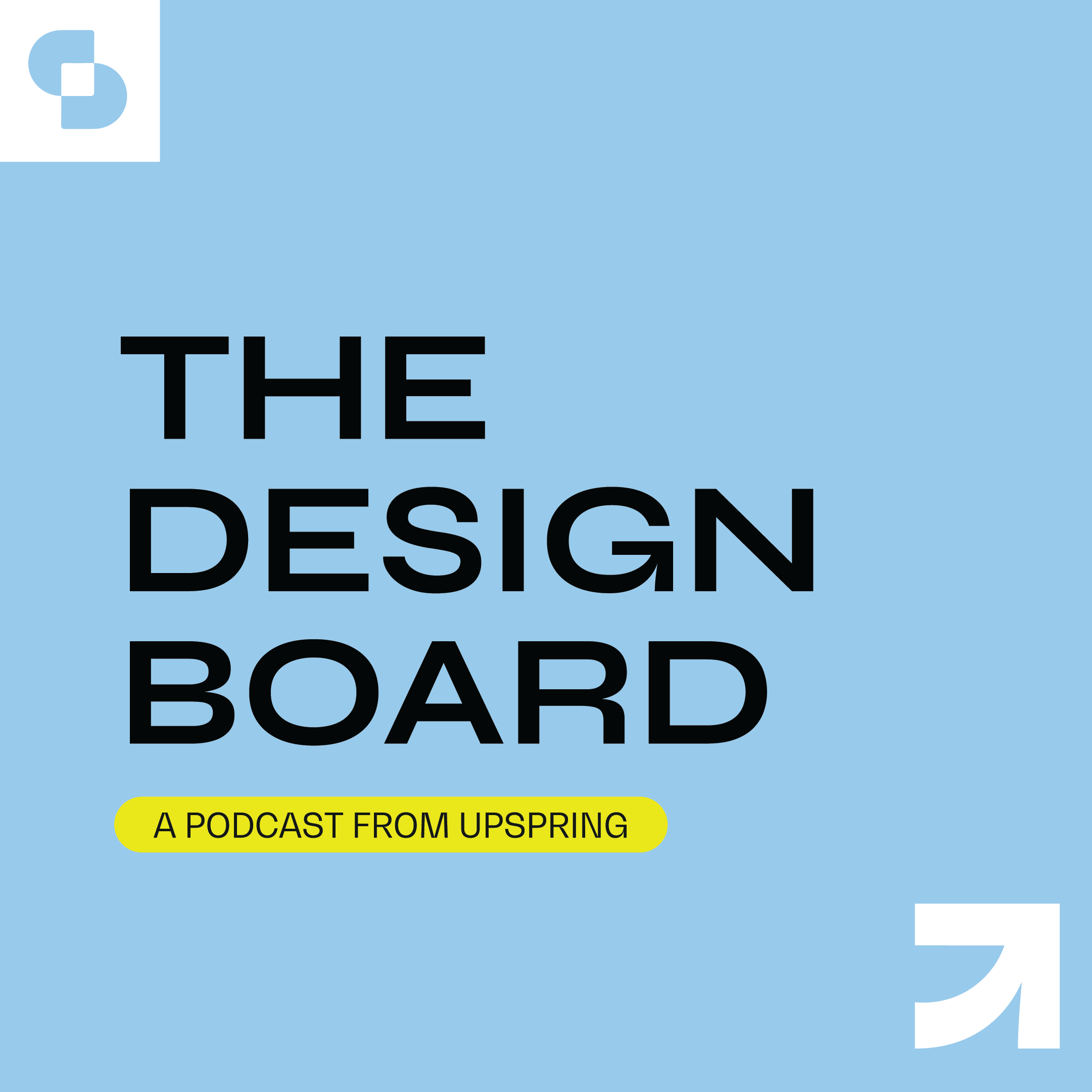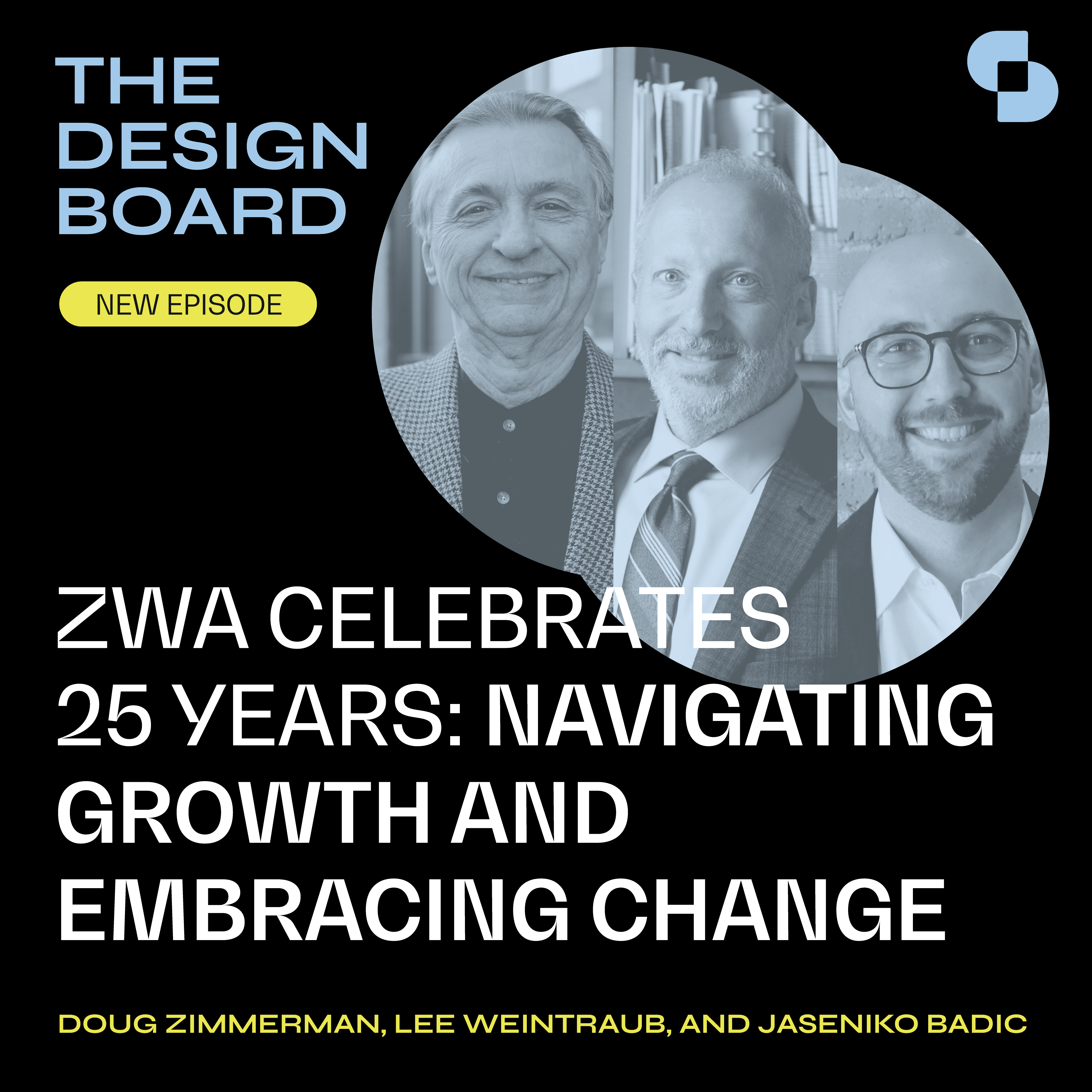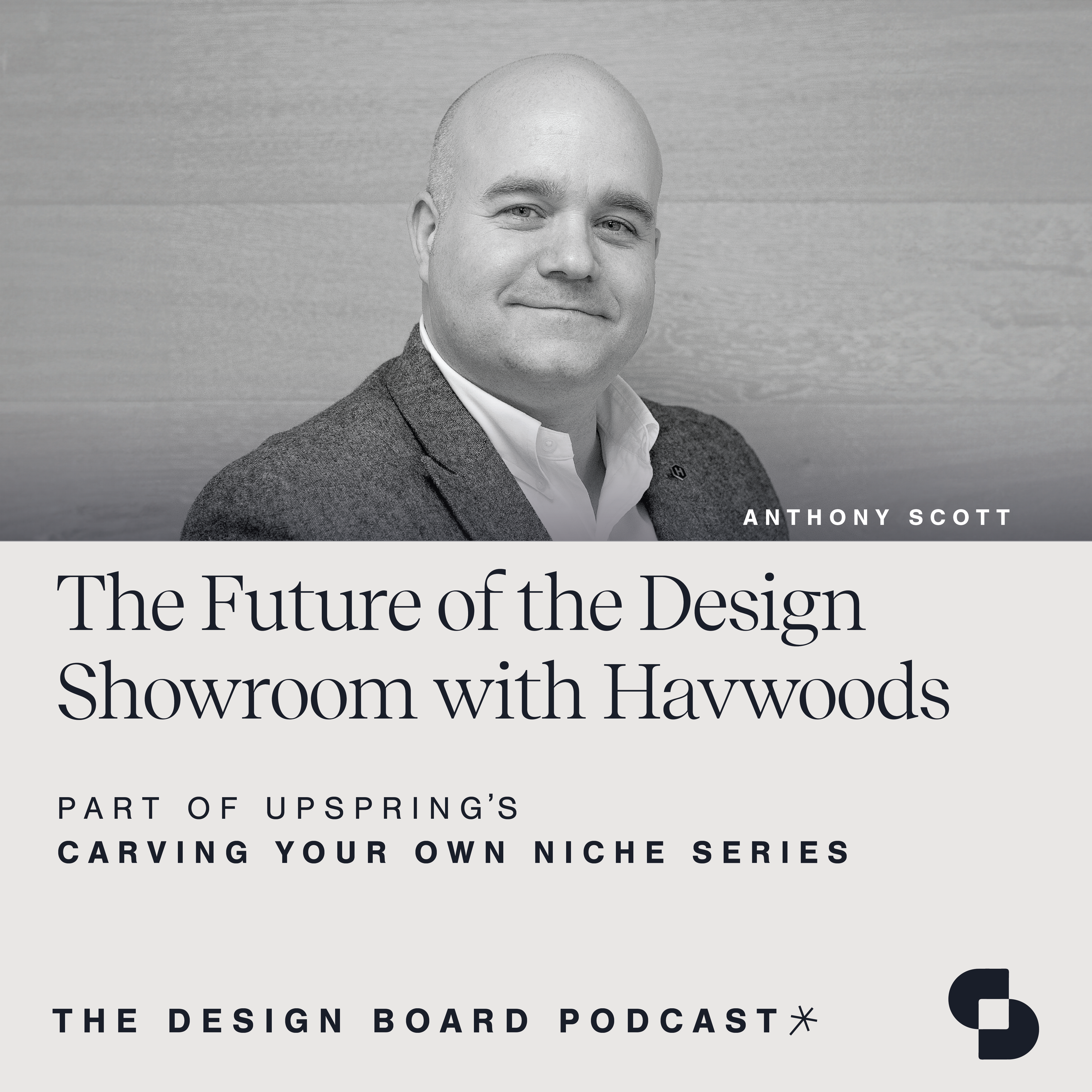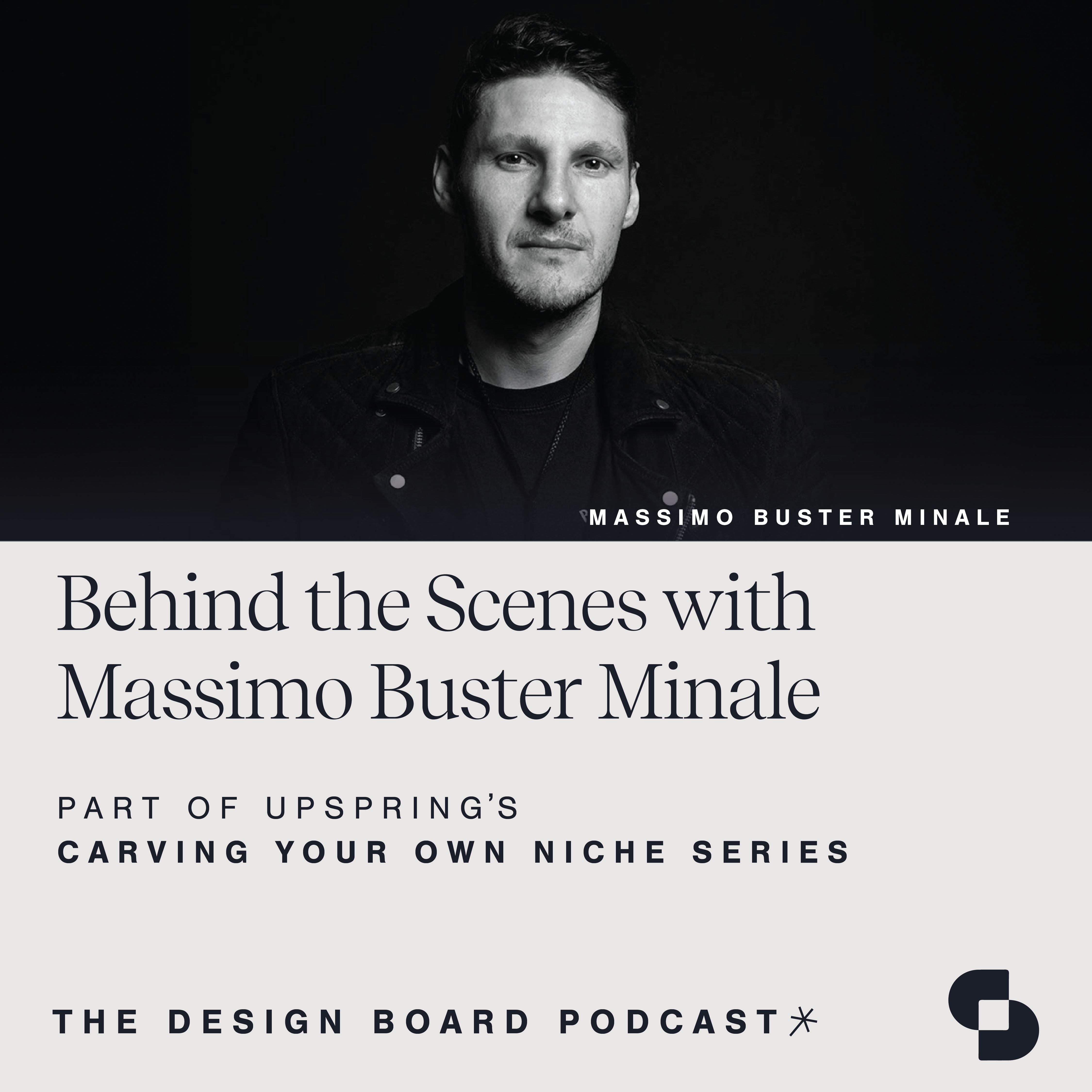This episode takes you on a journey through the world of boutique and lifestyle hospitality design as we recap BDNY 2023, the renowned trade fair and conference that sets the stage for the future of the hospitality industry.
The Design Board, by UpSpring, is a proud member of SANDOW Design Group’s SURROUND Podcast Network, home to the architecture and design industry’s premier shows.
Automated:
Welcome to The Design Board, a podcast created by the team at UpSpring that focuses on design, development and everything in-between. We invite innovators in our industry and explore topics that support your growth in every way. The Design Board is a proud member of SURROUND, a podcast network from StandOUT Design Group, featuring the architecture and design industry’s premier shows. Check it out at surroundpodcast.com.
Welcome everyone to the Design board, a podcast by UpSpring that focuses on design, development and everything in-between. We host innovators in our industry and explore topics that support your growth in every way. I’m your host, Caroline Saba, and today I’m joined by my colleague, Cody Suher, an associate vice president here at UpSpring who specializes in developing PR strategies and campaigns for our product manufacturing clients. Cody has been with the UpSpring team for eight years, steering and managing accounts for both B2B and B2C product manufacturers. With a comprehensive understanding of the hospitality contract and residential sectors, Cody has consistently secured top tier press coverage for project installations, product placements, trend narratives, and expert profiles. Today we’re recapping BDNY, the premier trade fair and conference for boutique and lifestyle hospitality design. If you missed out on the event, or want to relive the highlights, you’re in the right place.
Thank you so much for joining me today, Cody.
Cody Suher:
Thank you for having me, Caroline.
Caroline Saba:
We’ve been to so many BDNYs together, so this will be fun to recap. For our listeners who are maybe unfamiliar, let’s start off with the basics. What is BDNY?
Cody Suher:
So, BDNY is Boutique Design New York. It is a two-day trade fair with product manufacturers exhibiting, but then also, designers and specifiers walking the show and attending conferences and panels, and just really getting an idea of what’s new and hot in the hospitality market.
Caroline Saba:
Yeah. It’s been fun. Some people were saying that this year’s BDNY had a 20% increase in attendance. It’s been cool to see it over the past three years, too, post pandemic, how much more traction the show has gotten.
Cody Suher:
Yeah. I mean, it feels like we’re back to normal. I know just even when I arrived at BDNY, I was on that luggage line for 30 minutes, which just goes to show you that everyone was there and ready to walk the show.
Just talking to some of the exhibitors, it seemed like Sunday was super packed, which is always a good sign. I think weekends can sometimes be a little slower, and then Monday the traffic was still really great. So, I think, finally, we’re starting to see these shows really go back to what they were before the pandemic.
Caroline Saba:
Yeah. It’s amazing. So, what about some key highlights that you saw? Were there any themes that stuck out to you?
Cody Suher:
Definitely. I would say nature and biophilia, major theme. I think we’re seeing that across all markets, whether it’s residential, commercial, hospitality, healthcare. It seems that everyone is looking for ways to incorporate nature into their spaces, whether it’s in a literal sense. We saw some living green walls that were being showcased, or in a less literal sense of just a lot of greens, a lot of nature motifs in artwork, a lot of natural materials being used.
Sustainability is still top of mind. It will be, honestly, forever. I think that that’s one of the most important factors that designers are considering when making a decision about a product. We saw that at the show. One of my favorite products that I saw was actually a chair that was upholstered in cork.
Caroline Saba:
Oh, wow.
Cody Suher:
So, yeah. People are getting really creative with ways to use some natural materials. I have to give this booth a lot of credit. It was a smaller booth. The salesperson was holding out what looked like a cheeseboard, but it was actually just all of the different fibers that were used within this company’s furniture. So, it was a really interesting way to get an attendee in their booth. I was just blown away to see how they were using those materials. So, I think sustainability, major theme. Durability and cleanability is just always going to be important in hospitality spaces.
So, I think what I was seeing in a lot of the booths that I visited were people just trying to educate me on how to clean their products, or the ways that their products are durable, the construction of it, the different applications for the product, so. “Is this carpet, or rug, more suitable for the public spaces? Or, is it best used in a guest room?” So, that was also something that I was seeing a lot of. Then, customization. That’s what hospitality is all about.
So, just going into the different booths and seeing all the colors you can choose from, all of the different metals that you can accent with. I think that something designers should know and probably already do know, is that you can walk into pretty much any hospitality manufacturer’s booth, choose a product, and know that you can really make it your own.
I know just from working with my own clients that the messaging is always customization. So, that’s definitely something that I was seeing along with technology. One of our clients was actually featuring this website that they developed, where you can render an entire guest room using a bunch of components so you’ll be able to see exactly what the guest room would look like. Then, download a quote directly from the website, which saves a lot of designers time. So, just seeing the way technology is being used for a lot of these companies, whether it’s directly in the product for charging-
Caroline Saba:
I think it’s really interesting what you said about sustainability because there’s been so much talk obviously about greenwashing in the industry. I think it’s really impactful that that stuck out to you because that meant that those product manufacturers were really showcasing it in a way that was relevant to someone walking by, and was also educational in that sense, too. So, I love hearing that.
Cody Suher:
Yeah. And, people are being loud and proud about it. A lot of the big hotel groups now require a certain level and standard of sustainability in all of the products used within their spaces. So, I was seeing a lot of signage within booths that said, “We’re MindClick certified.” People just really, really want you to know what materials they’re using, how you can recycle their products, or how their products can be upcycled. I think this lends itself to the durability aspect, too. When you’re designing a hospitality space, you want to choose pieces that are going to last for 10 years. You’re not going to want to keep switching up the rooms over and over again. So, you’re really looking for these well constructed pieces of furniture that can handle the amount of traffic that is typical to these spaces.
In a lot of ways, that makes it inherently sustainable because it’s not going to be the fast furniture. It’s going to be pieces that were well sourced, well engineered, and thoughtful in every sense. “How much electricity does it require? Are there any chemicals used that are treated, or any chemicals that they have used to treat the textiles that they’re either selling as textiles or as upholstery.” So, everything, I think, that manufacturers are putting on the market has to have some level of sustainable thought to it. It’s just at this moment in time, one of the most important considerations you should have.
Caroline Saba:
Yeah. I think that’s great. You started to touch on one of my next questions, too, about challenges that maybe hospitality designers are facing, and maybe even some of those property owners, as well. I think what’s interesting is we’ve seen, and this is a result of so many people attending BDNY this year, just people wanting to travel again and more and more people traveling, too. So, what do you feel like many of those designers are looking out for when they’re walking through those booths, the products?
Cody Suher:
I mean, well, we all know that the elephant in the room is budget. Right? So, that’s going to trump all, I think. But at its most basic level, it’s all about experience. Like you said, people are traveling and also documenting. So, that Instagramable moment is going to be major for the marketing success of your hotel or boutique or restaurant. So, I think designers are looking for products, or even just whatever scheme they’re going for, to be cohesive enough that it really makes a moment in a photo. You’re going to see people who are traveling to these places and have that ideal. I think it’s that aspiration that really gets people through the door. So, finding those unique pieces that also blend in with the more functional and durable and cleanable pieces.
I think that this year at BDNY, we were seeing a lot of that through color, so it’s very, very colorful, which I always find interesting. At the trade shows people put out a lot of color, and I think part of that strategy is to get an attendee’s attention to come into the booth and see what you have to offer. A lot of times, on the other side, they’re specifying something that’s a little bit more neutral. I think the reality is it’s got to be a mixture of both. Whether it’s a very colorful carpet, or a big piece of artwork, that just adds that extra level of pizazz within the space. Or, maybe it’s something a little bit more sculptural. So even with the outdoor furniture, we were seeing these heating lamps that were huge, huge and had a built-in table and was really something that kind of owns the space. Or, those outdoor umbrellas that I even know, Caroline, you were drawn to the striped umbrellas-
Caroline Saba:
I was.
Cody Suher:
… which I think is… Yeah. It’s the white lotus effect. It’s people seeing Sicily, and those images of being by the ocean with a striped umbrella and really relaxing and enjoying yourself. So I think, in general, designers are challenged to create an experience on a budget. So mixing, again, some of those more neutral, I would say, modernist pieces of furniture, which is still going strong. It always will because it’s a timeless era. Mixing it with color, so maybe it’s a very simple sort of Scandinavian inspired chair upholstered in orange boucle. Balancing those different moments to find the right formula for Instagram or photos or marketing, whatever it is.
Caroline Saba:
Yeah. I love that. I know you mentioned the importance of creating that experience and giving that person a sense of space. I actually felt that a lot when we were walking the show. There were so many booth that just transported you into another place.
I think it was the Brian Ashley Booth that we went through. I felt like I was stepping into a hotel in Santa Monica, with the muted tones, the furniture that felt coastal. So, I totally get what you’re saying there. It makes people really see what the guest is going to experience when they’re walking through a space.
Cody Suher:
Yeah. And, I’m glad you brought up that booth, which was well done, if they’re listening. But, I feel, too, that if we’re talking about what’s trending, right now. Like I said, I think it was around five years ago that we were really seeing sort of the resurgence of mid-century modern, modernist furniture.
Now, we’re kind of seeing some fun, Hollywood Regency maximalism. At that Brian Ashley Booth, what Caroline is talking about is they had almost like seashell inspired chairs, big headboard energy. I saw that across all of the furniture booths that I was walking through.
People are really, really taking the headboard. In this case, it was a beautiful, again, seashell or fan inspired headboard that was just soft to touch. It was beautiful, pastel pink. It really made you feel kind of, again, like the coastal grandma who’s going to this resort in the 1940s, or ’50s. It’s that aspirational lifestyle, again, that people are drawn to.
Caroline Saba:
Yeah. I definitely agree. I always like to talk about advice in these discussions. I’d love to hear your thoughts on advice you would give aspiring designers and hospitality professionals looking to break into the hospitality industry specifically, especially based on what you’ve learned at BDNY over these past few years.
Cody Suher:
I would say that the advice I would give to designers who are new to the industry, looking to break into it… Maybe, you’re a product manufacturer who is new to the hospitality market. Or, you’re even a crossover, which is very common now, as we know. Maybe you’re residential, going into hospitality, commercial. Whatever it is, do your research.
I think that it’s important to ask the right questions of any manufacturer that you are looking to source from. As we were walking the show, we were doing our own PR research. We would drop by the booth, and we would talk to people. Everyone at the show is very friendly. It’s fundamentally a networking event. So, walking around, talking to the different salespeople, or sales reps, on the floor, attending these panels, which I think are so helpful and inspiring and educational. Making sure that, whether it’s furniture or kitchen and bath, whatever you’re specifying, ask about where they manufacture the products and ask about the different certifications they have. Ask about the company itself, “What do they stand for? What’s their purpose?”
I know that one of my clients, Native Trails, who exhibits at BDNY, their thing is that they’re a B Corp organization, and they love to work with artisans. So, a lot of their products are handmade. Their Murano sinks are made in Italy by people who have been honing this craft for generations. I think that when you get to know the story behind a product, it’s a little bit more impactful. You feel good about the pieces that you’re selecting for your different spaces. A lot of times, maybe, it’s worth stretching that budget to know how the sofa, or how the chair, is constructed and where are these materials coming from. So, yes.
Caroline Saba:
No. That’s great. I think that’s so helpful for anyone just curious on how to get more involved, and how to better understand the guests that they’re targeting to.
Cody Suher:
Yeah. And, go to the parties. Oh, my gosh. There’s so many fun parties during BDNY. It’s a great time of year. It’s just before the holidays start. New York is buzzing. We’re putting up our windows at Macy’s. I think it’s just such a great time to get together, whether it’s with your colleagues at your firm, or just to meet new people. There are so many opportunities during BDNY to do that.
Caroline Saba:
I love that. Yeah. BDNY is such a great time and place to network, in addition to learning about new products entering the industry. On that note, in your opinion, what do you feel sets BDNY apart from other design and hospitality events, and why do you feel people should be attending?
Cody Suher:
What I love about BDNY is that it’s two days. I know that that’s a little bit scary for exhibitors because any trade show is an investment and you want to get your money’s worth. I think that, because it’s so short, you do see a lot of the traffic condensed. People are very focused. People know what they want to get out of the show. They’re able to plan ahead of it. What’s fun is, you just have so many different exhibitors. I go to the lighting trade shows, the kitchen and bath trade shows, tile, of course. But, what’s fun about BDNY is you can have every single product category. Then, other things, as well, sheets and towel warmers, and all sorts of fun gadgets that are new to the market, all in one space. So if I was a hospitality designer, I could go in there and theoretically spec a whole room in one day.
Caroline Saba:
Yeah. That’s so true. I love that. Okay. Last question to wrap things up. We’ve hinted on it throughout the conversation, really, about trends set to come. The big question for the end of this year is, obviously, “What will we see in our hospitality spaces in 2024?” So, anything that you’d like to call out, in terms of predictions, for how the design landscape will evolve.
Cody Suher:
I think in 2024, we’re going to be, again, sort of going back to those same themes that I was talking about earlier on. We’re going to be seeing a lot of color. We’re going to be seeing a lot of texture so even just whether it’s the actual textile itself. I mentioned boucle. We’re seeing that everywhere, right now. But also, just even in the construction of say, a chair frame, we’re seeing a lot of caning. We’re seeing, within the outdoor furniture realm, a lot of sort of rope framing. Tons of outdoor furniture this year, at the show. This could be a post pandemic thing, too, just people wanting to be outdoors. That’s kind of the experience that they’re looking for from their travel. As much money as you put indoors, you now have to think about the outdoors, as well. We were seeing lots of day beds and umbrellas. In terms of surfacing, still very kind of minimalist. A lot of wide plank flooring. A lot of, actually, some darker colors when it comes to flooring, whether it’s hardwood, or something more ceramic like a tile. Well, what are you seeing, Caroline?
Caroline Saba:
I saw a lot of what you saw. I saw a lot of fringe, which was fun. The fringe was just a small detail, maybe in a chair or a fixture, whether that’s lighting, too. I thought that was really interesting. I haven’t seen too much of that much. I was having a conversation with someone the other day, too. They were saying that could be a reflection of Gen Z and their interest in thrifting. So, I’m excited to see where that evolves, too.
Cody Suher:
Yeah. I love that. I remember, too. Was it Hudson Valley? One of the lighting companies, they had a oyster-
Caroline Saba:
I loved that one.
Cody Suher:
… inspired light. So, we’re actually even just talking to you, right now, and reflecting lots of coastal inspiration. I think they also had a lighting chandelier. It was almost like icicles-
Caroline Saba:
Yeah.
Cody Suher:
… falling from the sky, the nature aspect of it. Also, just again, sort of that engaging, eye catching, sculptural side of the product. We were speaking to a wonderful saleswoman, there, who was saying that, “Yeah. So, we’ve got these sort of loud fixtures that are super unique. Then, we also have just the very basic, functional fixtures that people are looking for.” So again, mixing the two, having your foundation for your space, and then throwing in a really loud mirror.
Caroline Saba:
Yeah.
Cody Suher:
We’re seeing lots of those too, to just kind of add that extra element of surprise and intrigue.
Caroline Saba:
Yeah. No. It was so fun walking the show, and I think even more fun, obviously reflecting on it. I’m so curious to see what will come of 2024, too. What else? How these designers will continue to evolve what they’ve already built.
Cody Suher:
Yeah. The good news is when we were talking to a lot of the exhibitors, it seems that business is doing well, and that a lot of new properties and opportunities are opening up. I know that the hospitality industry was hit pretty hard during COVID, so it’s nice to hear that it’s booming again.
Caroline Saba:
Yeah.
Cody Suher:
You and I both love to travel, so it’s exciting to get a glimpse, especially when you’re walking up BDNY of what we can expect as the end user,
Caroline Saba:
Totally.
Cody Suher:
… and the different fun types of products that will be used.
Caroline Saba:
Absolutely. Well, thank you again, Cody, for walking through everything with me. This has been such a great conversation. For those that didn’t attend, I hope this was insightful. For those that didn’t attend, too, I hope you plan on attending next year. So, thank you all.
Cody Suher:
Thanks everyone.
Automated:
Thank you so much for listening in with us, today. We hope you leave inspired by the ideas in today’s episode. For more, follow UpSpring on LinkedIn and Instagram. Don’t forget to check out the amazing lineup of shows brought to you by the Surround podcast network at surroundpodcast.com.

